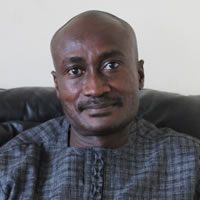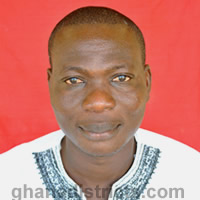Education
While significant efforts have been made by central government and other agencies to improve access through the provision of infrastructure and facilities, issues of financing quality education and management remain big concerns in the District. Universal enrolment in basic schools has not been achieved and adult literacy is estimated at 68.5% of the population (11 years and above) but varies considerably between men and women, with their respective rates being 54.1% and 45.9%.
Quality of Education
The Ada West District has a total of 438 teachers supporting teaching and learning activities. Out of this number, 406 teachers representing 92.7 % constitutes the total number of trained teachers in the entire district (with 156 being females and 250 constituting males) while 32 are untrained representing 7.3 % who are currently assisting the trained teachers. There are also 11Community Education Trained Assistance (CETA) under the National Youth Employment who are supplementing the teaching staff. Table 1.8 below presents the total number of teachers per Circuits in the District.
The number of teachers in the public schools at all levels had witnessed considerable increase from 2012/2013 to 2013/2014. At the KG level, the total number of teachers increased from 18 to 41, while at the primary schools level, the teachers’ population rose from 183 to 222 and at the JHS it increased from 161 to 175. These increases are expected to be reflected in the improvement in the Pupil- Teacher Ratio hence the quality of teaching and learning.
There is a general improvement in the number of trained teachers in the public schools from 344 in 2012/2013 to 406 in 2013/2014 which shows an 8.02% increase in trained teachers as indicated in the table below.
The District is divided into four circuits for proper management and supervision. Sege circuit has the highest number of teachers for the primary level as well as for the JHs while Afiadenyigba circuit has the least number of teachers for both primary and JHS level as in the table below.
Comparing the Pupil-Teacher ratio, one can observed that even though there is increase in the number teachers from 2012/2013 to 2013/2014, the Pupil-Teacher Ratio rather show worsening situation. This could be explained by improvement in enrolment over the period.
BECE Performance
The quality of education is measured by the performance of the pupils at the BECE as one of the indicators. Comparatively, the performance of the schools at the JHS for the last three years for both private and public sector indicates a falling standard as the public schools performance average below 50%. From the table, it is apparent that the private sector performance is far above that of the public school over all the three years from 2011 to 2013 as illustrated in the table below.
Access to Basic School
The public and private sectors continue to collaborate to provide educational services in the District. The private sector contributes about 39.2% of the total school facilities while the public sector contribute 60.8%
At the Kindergarten, of all the total schools, the Private sector accounts for 43.1% while the public sector accounts for 56.9%. Similar trend can be observed for the primary level where the private sector accounts 42.1% while the public sector provides 57.9%. It is only at the Junior High School where the contribution of the private sector is far lower (28.1%) than the public sector (71.9%)
That table below shows the distribution of the public educational facilities among the various Urban/Town/Area Councils.
Kindergarten enrolment increased from 3,906 in 2012/2013 academic year to 4,248 in 2013/2014. This represents an increase of 8.05%. At the Primary level however, enrolment decreased from 11, 081 to 10,916 over the same period. This represents a decrease of 1.5%. Similar trend of decrease is also observed for the Junior High School as enrolment fell from 3, 592 in 2012/2013 to 3,400 in 2013/2014 academic year showing a decrease of 5.3%
The application of computer in basic school is considerably low as shown in the table 1.9.9.
Distance Travel to School
The data below measure the extent to which school is accessible to the pupils in the District. The table illustrates the distance travel by pu pils to school and it determines how distant the school is from the communities. It shows that on average 39% of children in KG walk for less than one kilometre to school while 29% for the primary level the level of
The total number of candidates registered by the public schools is 698 made up of 398 boys and 300 girls. Out of this number 297 candidates recorded aggregate between 6-30 representing 42.60%.
OTHER PERFORMANCE INDICATORS
Gross Enrolment Ratio
The Gross Enrolment Rate examines the enrolment at any level of the educational ladder against the school going -children at that level. The ration is measured irrespective of the age of the children. For the KG, the GER decreased from 89% to 87% between 2011/2012 and 2012/2013. This implies that for every 100 children aged 4-5 in the district 87 of them irrespective of their age in 2011/2012 have access to KG education which is below the national target of 100% to be achieved in 2015
Net Enrolment Ratio
This indicator on the other hand seeks to measure the enrollment at a level of the educational ladder with regards to age of the pupils as against the school going children at that level in the district. In the district, the NER in the KG decreased from 43% in 2011/2012 to 41% in 2012/2013. This is also far below the national target of 90% to be attained in 2020.
Gender Parity Index
GPI measures the intensity of discrimination in enrolment between the sexes. It records the extent to which girls are sent to school as compared to their boy counterpart. In the District, The GPI for the KG has remain the same 1:1 from 2011 to 2013 but increased to 1.04 in 2013/2014
Date Created : 11/17/2017 4:51:43 AM






 facebook
facebook twitter
twitter Youtube
Youtube TOLL FREE 0800 430 430
TOLL FREE 0800 430 430 +233 593 831 280
+233 593 831 280 GPS: GE-231-4383
GPS: GE-231-4383 info@ghanadistricts.com
info@ghanadistricts.com Box GP1044, Accra, Ghana
Box GP1044, Accra, Ghana